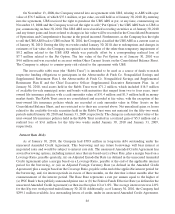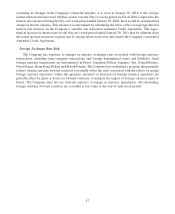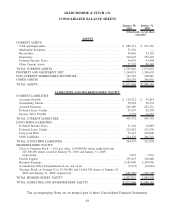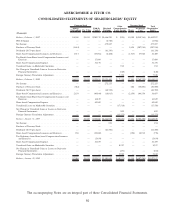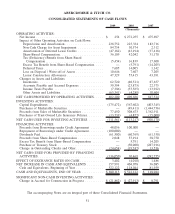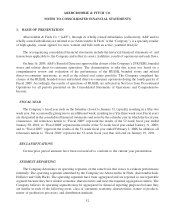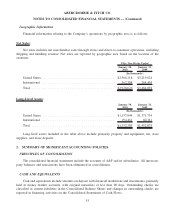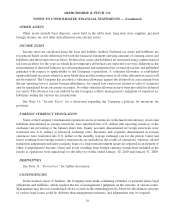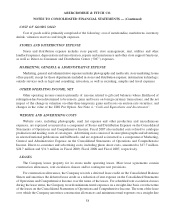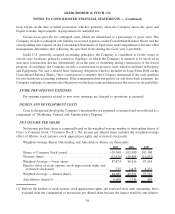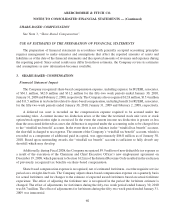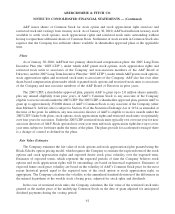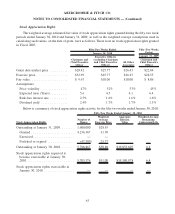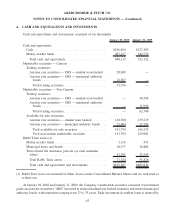Abercrombie & Fitch 2009 Annual Report Download - page 57
Download and view the complete annual report
Please find page 57 of the 2009 Abercrombie & Fitch annual report below. You can navigate through the pages in the report by either clicking on the pages listed below, or by using the keyword search tool below to find specific information within the annual report.OTHER ASSETS
Other assets include lease deposits, assets held in the rabbi trust, long-term store supplies, pre-paid
foreign income tax and other miscellaneous non-current assets.
INCOME TAXES
Income taxes are calculated using the asset and liability method. Deferred tax assets and liabilities are
recognized based on the difference between the financial statement carrying amounts of existing assets and
liabilities and their respective tax bases. Deferred tax assets and liabilities are measured using current enacted
tax rates in effect for the years in which those temporary differences are expected to reverse. Inherent in the
measurement of deferred balances are certain judgments and interpretations of enacted tax law and published
guidance with respect to applicability to the Company’s operations. A valuation allowance is established
against deferred tax assets when it is more likely than not that some portion or all of the deferred tax assets will
not be realized. The Company has recorded a valuation allowance against the deferred tax asset arising from
the net operating loss of certain foreign subsidiaries, for capital loss carryovers related to sales of securities
and for unrealized losses on certain securities. No other valuation allowances have been provided for deferred
tax assets. The effective tax rate utilized by the Company reflects management’s judgment of expected tax
liabilities within the various tax jurisdictions.
See Note 11, “Income Taxes” for a discussion regarding the Company’s policies for uncertain tax
positions.
FOREIGN CURRENCY TRANSLATION
Some of the Company’s international operations use local currencies as the functional currency. Assets and
liabilities denominated in foreign currencies were translated into U.S. dollars (the reporting currency) at the
exchange rate prevailing at the balance sheet date. Equity accounts denominated in foreign currencies were
translated into U.S. dollars at historical exchange rates. Revenues and expenses denominated in foreign
currencies were translated into U.S. dollars at the monthly average exchange rate for the period. Gains and
losses resulting from foreign currency transactions are included in the results of operations; whereas, related
translation adjustments and inter-company loans of a long-term investment nature are reported as an element of
Other Comprehensive Income. Gains and losses resulting from foreign currency transactions included in the
results of operations were immaterial for the fifty-two weeks ended January 30, 2010 and January 31, 2009.
DERIVATIVES
See Note 13, “Derivatives” for further discussion.
CONTINGENCIES
In the normal course of business, the Company must make continuing estimates of potential future legal
obligations and liabilities, which requires the use of management’s judgment on the outcome of various issues.
Management may also use outside legal advice to assist in the estimating process. However, the ultimate outcome
of various legal issues could be different than management estimates, and adjustments may be required.
56
ABERCROMBIE & FITCH CO.
NOTES TO CONSOLIDATED FINANCIAL STATEMENTS — (Continued)


